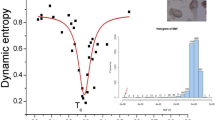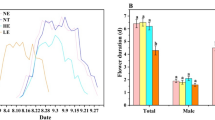Abstract
THE practice of the indefinite reproduction of woodcuts by means of clichés has frequently given rise to the repetition of erroneous drawings in one scientific text-book after another. Botanical text-books seem to have suffered especially in this way, in consequence of the great dearth of new and original illustrations by which they are characterised. Many botanical students must have been puzzled by the peculiar appearance presented by the pollen of the cherry in a very familiar drawing. It is hardly sufficiently explained that “the escape of the fovilla in an irregular jet,” as there represented, has nothing to do with the process of fertilisation, but is an altogether abnormal phenomenon depending on the bursting of the pollen-grain from artificial moistening. The shape of the pollen-grain, as drawn, for example, in Balfour's “Class-book of Botany,” Le Maout and Decaisne's “General System of Botany,” and Dr. Hooker's Science Primer “Botany”1 is also incorrectly indicated. The perfectly spherical form represented in these drawings is almost, if not altogether, confined to anemophilous plants, fertilised by the wind. The cherry is, on the contrary, entomophilous, and its pollen partakes of the general character of this class of plants. Though somewhat variable in size and form, the grains are, I believe, never spherical, but ellipsoidal, with three longitudinal furrows, as represented in the longitudinal and apical aspects, a, b in the accompanying figure. The pollen has, however, well-marked characters of its own, which distinguish it from that of allied plants, the ends often appearing truncated, as represented in c, and some or all of the grains more gibbous on one face than another (d). Most pollen-grains assume a more spherical form on being moistened with water.
Similar content being viewed by others
Article PDF
Rights and permissions
About this article
Cite this article
BENNETT, A. The Pollen of the Cherry. Nature 14, 28 (1876). https://doi.org/10.1038/014028b0
Issue date:
DOI: https://doi.org/10.1038/014028b0



